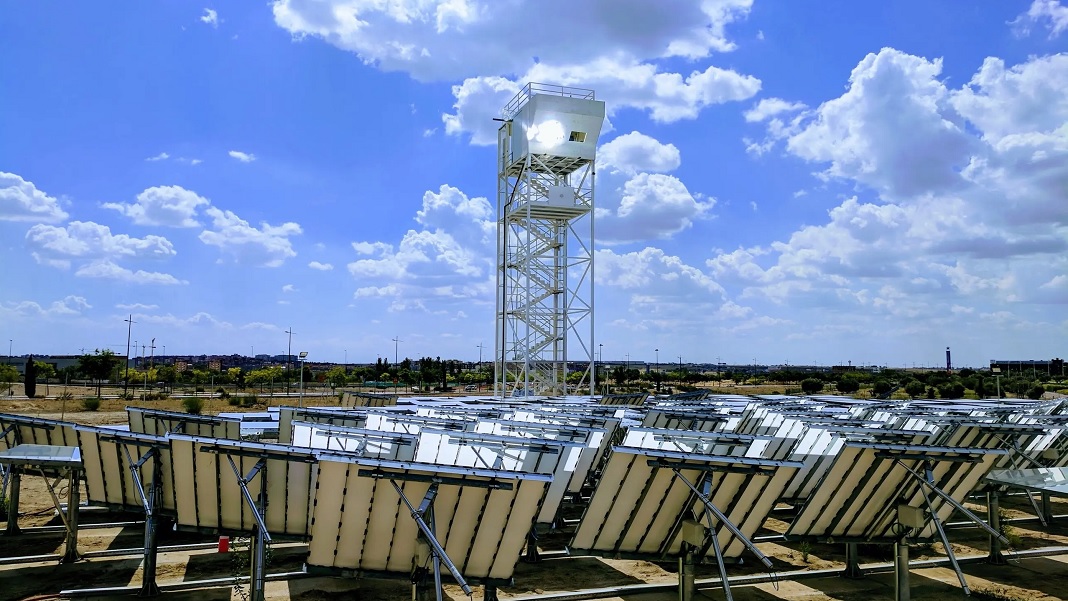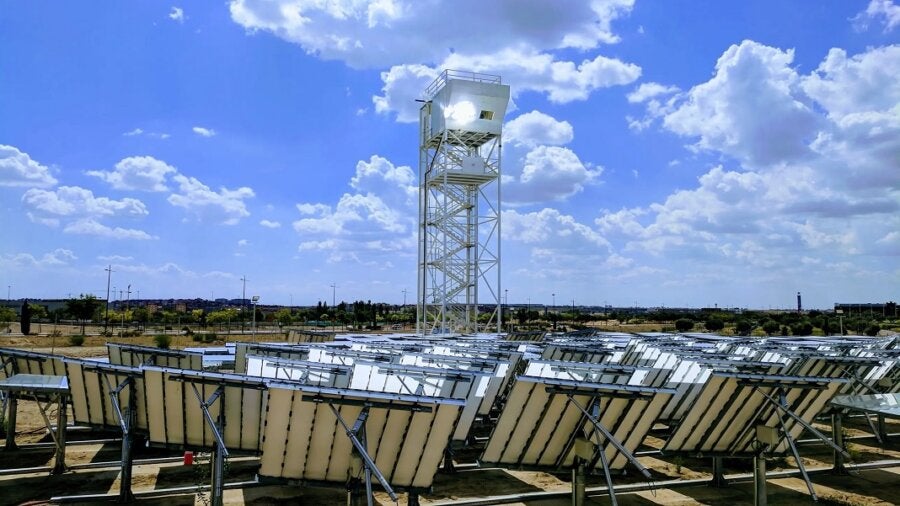

In theory, it’s possible to create jet fuel from nothing more than water, CO2, and energy from the sun, but doing so outside of the laboratory has proved challenging. Now researchers have created the first fully-integrated system capable of doing it at scale in the field.
Aviation accounts for around five percent of global greenhouse gas emissions, and it’s proven stubbornly difficult to decarbonize. While other sectors have relied on electrification to switch from fossil fuels to renewable energy sources, the stringent weight constraints of aviation make relying on battery power unfeasible anytime in the near future.
There’s growing consensus that any realistic route to decarbonizing aviation by the middle of this century will require the use of sustainable “drop-in” fuels, which refers to fuels that work with existing jet engines and fueling infrastructure. The logic is that any alternative power source like batteries, liquid hydrogen, or liquid ammonia will require unrealistic levels of investment in new aircraft and fuel storage and distribution systems.
Researchers are investigating a wide variety of approaches to making sustainable aviation fuels. The most common today involves creating kerosene by reacting animal or vegetable oils with hydrogen. The approach is well established, but there are limited renewable sources of these feedstocks and there is competition from biodiesel from the automotive sector.
An emerging approach involves creating fuel by directly combining green hydrogen with carbon monoxide derived from captured CO2. This is much more challenging because all the steps involved—electrolyzing water to create green hydrogen, capturing CO2 from the air or industrial sources, reducing CO2 to CO and combining them to create kerosene—use lots of energy.
The advantage is that the raw ingredients are abundant, so finding a way to reduce the energy requirements could open the door to a plentiful new source of sustainable fuels. A new plant that uses an array of mirrors to direct sunlight towards a solar reactor on top of a tower could be a promising approach.
“We are the first to demonstrate the entire thermochemical process chain from water and CO2 to kerosene in a fully-integrated solar tower system,” Aldo Steinfeld from ETH Zurich, who led the research, said in a press release. “This solar tower fuel plant was operated with a setup relevant to industrial implementation, setting a technological milestone towards the production of sustainable aviation fuels.”
The facility, described in a paper in Joule, features 169 sun-tracking reflective panels that redirect and concentrate sunlight into the solar reactor perched on top of a 49-foot-high tower. Water and CO2 are pumped into the solar reactor, which contains a porous structure made of ceria, an oxide of the rare-earth metal cerium.
The ceria helps drive a redox reaction that strips oxygen from the water and CO2 to create a mixture of carbon monoxide and hydrogen known as syngas. The ceria is not consumed by this process and can be re-used, while the excess oxygen is simply released into the atmosphere. The syngas is pumped down the tower to a gas-to-liquid converter, where it is processed into liquid fuel that contains 16 percent kerosene and 40 percent diesel.
By using the heat of the sun to drive the entire process, the setup provides a way around the considerable electricity demands of more conventional approaches. However, the researchers note that the efficiency of their system is still relatively low. Only four percent of the captured solar energy was converted into chemical energy in the syngas, although they see a route to increasing that to above 15 percent.
The overall production levels are also a long way from what would be required to make a dent in the aviation industry’s fuel demands. Despite the facility taking up space equivalent to a small car park, it was only able to produce just over 5,000 liters of syngas in 9 days. Considering only 16 percent of that was then converted into kerosene, the technology will have to scale up considerably.
But this is the largest-scale demonstration of using sunlight to create sustainable fuels to date, and as the researchers point out, the setup is industrially realistic. With further tweaking and a lot of investment, this could one day offer a promising way to make sure our flights are less of a burden on the environment.
Image Credit: ETH Zurich